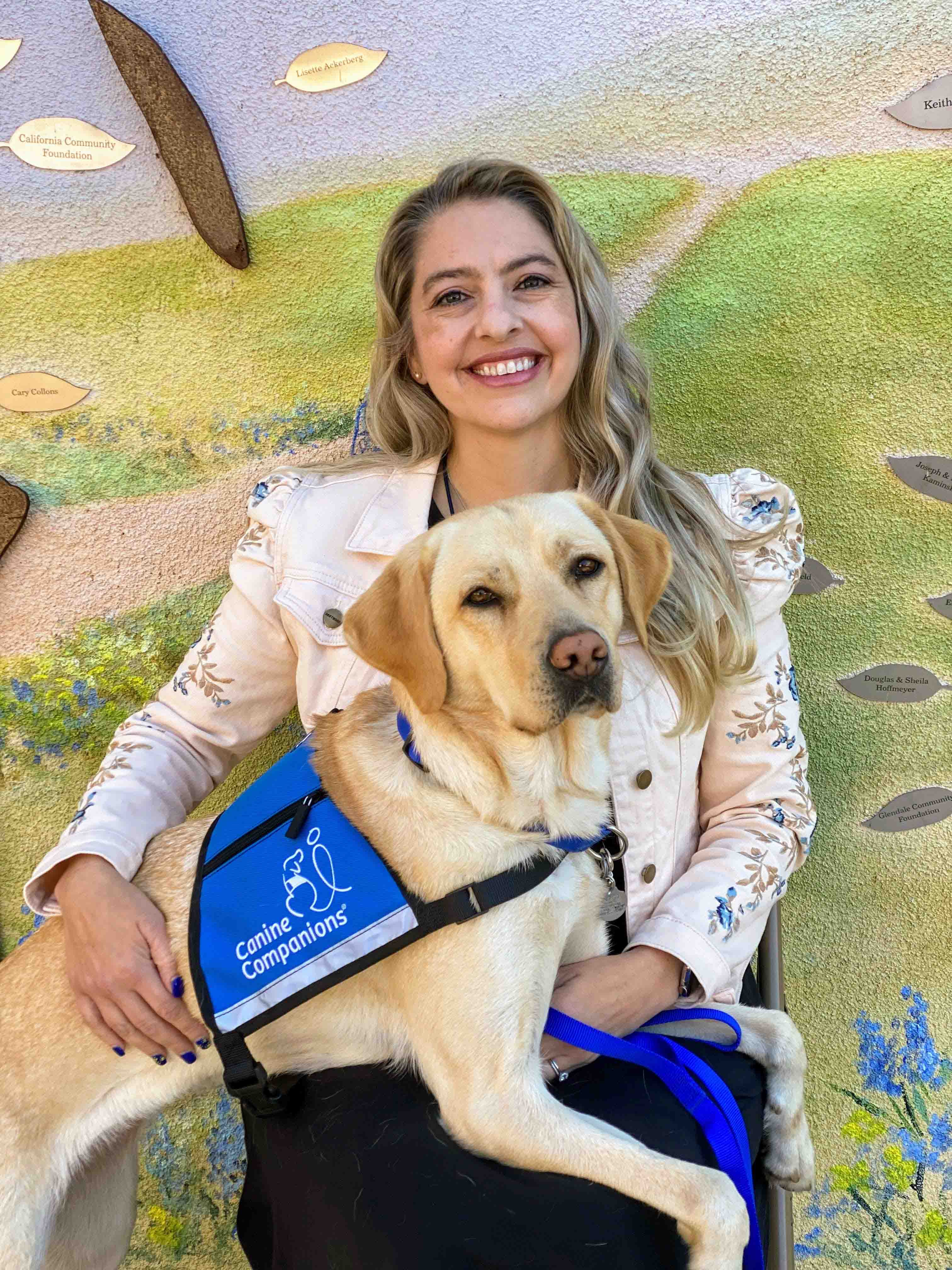Treating Trauma with Therapeutic Tails
 “I love that social work has taught me how to be more compassionate and inclusive,”
says MSW alumna and 4 Healing Center & Animals 4 Healing Director Janelle Nimer. “I
love that it's taught me how to help others through a variety of means."
“I love that social work has taught me how to be more compassionate and inclusive,”
says MSW alumna and 4 Healing Center & Animals 4 Healing Director Janelle Nimer. “I
love that it's taught me how to help others through a variety of means."
For Dr. Nimer, one of the primary means is with a menagerie of animals. As a therapist who has also trained in veterinary social work, Dr. Nimer is particularly aware of the ways animals can assist in therapy and includes equine- and canine-assisted therapy as much as possible in her work. “We use all the evidence-based practices most people have heard of, like EMDR or TF-CBT,” Dr. Nimer explained. “And we combine that with experiential and animal-assisted therapy, nature therapy, music therapy, and dance therapy.” This approach is particularly important for the clients her clinic serves, as nearly everyone who comes through the door has experienced significant trauma. “Trauma gets stuck in the body. When you use targeted movement and experiential practice—things like yoga, dance, gardening, and mindful breathing with a therapy animal—you’re able to help people move that trauma from the head into the body so they can let it go.”
Having clients work with animals is vital to Dr. Nimer’s approach to her work. “Animals pick up on the emotions in the room. Sometimes people put up barriers—clients and therapists alike. Our animals can mirror the emotions present—they can show and express what people sometimes aren’t able to.” Dr. Nimer explained sometimes it’s as simple as her dog, a yellow lab named Galaxy, showing extra energy and excitement. Other times, Galaxy will cling to a client—understanding their need to have someone right there. And still other times, Galaxy will sense a client having a panic attack and nudge the client or cover the client’s lap to apply pressure on their body and help the client come back to the room.
Dr. Nimer will then teach the client a dialectical behavior therapy (DBT) skill like Temperature, Intense Exercise, Pace Breathing, and Progressive Relaxation (TIPP). “When we teach temperature change, Galaxy helps keep the activity fun by bringing ice to the client while I teach them to put the ice on their wrist or on the back of their neck. Galaxy also loves intense exercise because then she gets to dance, jump, and run with clients. Paced breathing—matching our breathing to Galaxy’s while we calmly pet her—helps get clients to relax and calms down the nervous system. Or, the session may end with progressive muscle relaxation—the client laying on the floor with their shoes off, petting Galaxy with their feet. Galaxy would then move to lay across their legs while they tighten and relax them, or across their abdomen so they feel her weight as they breath in and out. Either way, the session ends with clients rolling to their sides, rubbing their closed eyes and scrunched face in Galaxy’s fur. All these skills help to solidify the DBT skills the client needs in a memorable way so they remember how to practice them at home.”
Other times, Dr. Nimer can use the animals in more metaphorical ways. With her training, she knows that when a horse shakes and rolls on the ground, they are releasing emotion, letting go of the tension. “That can be a skill building moment for the client,” she explained. “I can say, ‘See how Banner let go of that anger? How are you going to release the anger you’re feeling?’”
For Dr. Nimer, this pathway made sense. She has always loved animals—always. She was the preschooler who brought home the stray cat that bit everyone else, because who couldn’t love an orange tabby cat? When she started to seriously consider a career path, she determined she wanted to swim with dolphins and help people feel better. Thanks to a mentor, former dean of the College of Social Work, Jannah Mather, she found a profession where she can do both.
When she reflects on the path that brought her to her current position—co-founding a private practice, supervising social work students, and researching animal-assisted therapy—she is profoundly grateful for the impact of her social work education, and is working to build educational tools to help future social workers. “Animal-assisted therapy isn’t currently manualized, but my background in social work research is helping me move that forward.” She continued, “I love the development and study of social work. I love that it helps us create stronger, better modalities and theories to help people.”
